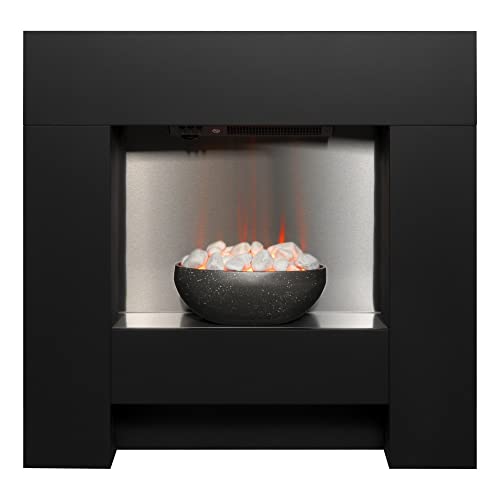The Timeless Appeal of Traditional Fireplaces in the UK
Traditional fireplaces have actually long been essential to homes across the United Kingdom, transcending simple energy to become centerpieces of heat, convenience, and visual appeal. simply click the following webpage looks into the enduring appeal of traditional fireplaces, exploring their history, design variations, setup considerations, and their modern-day relevance.
Historic Significance of Fireplaces
The fireplace has actually played a central role in British homes since middle ages times. Originally, they were essential for heating and cooking. Over the centuries, with the advent of main heating and technological advancements, fireplaces have actually changed into signs of heritage and design.
Key Historical Milestones
| Date | Turning point | Description |
|---|---|---|
| 12th Century | Introduction of Chimneys | Enabled indoor fireplaces to be common, enhanced ventilation. |
| 16th Century | The Renaissance impact | Fireplaces became more decorative, showing the age's designs. |
| 18th Century | The Georgian Era | Established intricate mantels made from wood and stone. |
| 19th Century | Victorian Era | Introduction of cast-iron and tiled fireplaces. |
| 20th Century | Decline and Modern Design | Shift towards gas and electric, with some revival of traditional styles. |
Types of Traditional Fireplaces
While contemporary styles concentrate on minimalism, traditional fireplaces typically exemplify intricate craftsmanship and historic significance. Here are some popular kinds of traditional fireplaces frequently discovered in the UK:
Open Hearth Fireplaces
- Identified by a large opening and usually built from brick or stone.
- Supplies a cozy ambiance and the noise of crackling flames.
- Needs an appropriate flue to reroute smoke outdoors.
Wood-Burning Stoves
- Confined units that burn wood for heat, often featuring a glass door.
- More efficient than open hearths, providing better heat retention.
- Available in numerous styles, from rustic to contemporary.
Cast Iron Fireplaces
- Popular in the Victorian era, understood for ornate styles.
- Durable and prominent for outstanding heat conduction.
- Typically function detailed patterns or motifs, enhancing visual appeal.
Tiled Fireplaces
- Typically decorated with ornamental tiles, these fireplaces display artistic flair.
- Typical in the 19th century, tiles can feature scenes or floral styles.
- Generally coupled with wood or cast iron parts.
Marble Fireplaces
- Popular for their beauty, these fireplaces are normally personalized.
- Marble provides an elegant surface and matches different interior styles.
- They need mindful installation due to their weight.
Table: Comparison of Traditional Fireplace Types
| Fireplace Type | Heat Efficiency | Visual Appeal | Upkeep Needs | Fuel Type |
|---|---|---|---|---|
| Open Hearth | Low | High | High (chimney cleansing) | Wood |
| Wood-Burning Stove | High | Moderate | Moderate (wood supply) | Wood |
| Cast Iron | High | High | Low | Wood/Gas |
| Tiled | Moderate | Extremely High | Low (if non-usable) | N/A |
| Marble | Moderate | Very High | Moderate | N/A |
Considerations for Installing a Traditional Fireplace
Installing a traditional fireplace can improve a home's character but comes with particular factors to consider. Here are some points homeowners must keep in mind:
- Building Regulations: Always examine local building regulations and regulations. Installation may require approval, particularly if structural modifications are needed.
- Material Selection: Choose materials that match the home's architecture and individual design. Consider usefulness together with visual appeal.
- Ventilation: Ensure proper ventilation through a chimney or flue to prevent smoke and gases from building up inside.
- Safety Precautions: Install carbon monoxide gas detectors and guarantee all precaution are in place, especially if utilizing wood-burning options.
- Professional Installation: Engage a qualified professional to guarantee safe and efficient installation, following security requirements.
Benefits of Traditional Fireplaces
Regardless of the increase of modern heating options, traditional fireplaces remain cherished for several factors:
Aesthetic Charm
- Adds character to any room.
- Serves as a social centerpiece, boosting gatherings.
Psychological Comfort
- Offers heat not just physically however mentally.
- Creates a cozy atmosphere perfect for relaxation.
Value Addition to Property
- Improves the appeal of a home to potential buyers.
- Typically increases home worth due to their desirability.
Environmental Considerations
- Wood can be an eco-friendly resource when sourced sustainably.
- Traditional fireplaces can contribute less to energy bills compared to electric systems.
Regularly Asked Questions (FAQs)
1. Are traditional fireplaces energy efficient?
While traditional fireplaces might not be as energy-efficient as modern heating unit, enhancements in design, such as the setup of glass doors, can boost their performance. Wood-burning ranges are especially known for being more effective than open hearths.
2. How frequently should traditional fireplaces be cleaned up?
Chimneys need to be inspected and cleaned a minimum of as soon as annually, especially if the fireplace is used frequently. This prevents creosote accumulation, which can result in chimney fires.
3. Can I use a traditional fireplace for gas heating?
Yes, traditional fireplaces can typically be converted to use gas. This involves installing a gas line and might need a conversion set depending upon the fireplace design.
4. What are the very best fuels for wood-burning fireplaces?
Experienced woods such as oak, hickory, or maple are recommended for wood-burning fireplaces as they burn hotter and longer than softwoods.
5. Can traditional fireplaces be utilized in modern homes?
Absolutely! Many modern designs incorporate traditional elements, permitting a harmonious blend of styles. Furthermore, traditional fireplaces can add a distinct touch to contemporary homes.
From their historic significance to their modern-day relevance, traditional fireplaces remain an ultimate feature in lots of UK homes. Their long-lasting appeal is not just rooted in their performance but likewise in the heat and beauty they use. Whether one opts for a classic open hearth or a wonderfully tiled fireplace, the choice contributes to producing an inviting environment where memories can be made. As homeowners end up being more conscious of aesthetic appeals and fond memories, traditional fireplaces are poised to keep their allure for generations to come.

